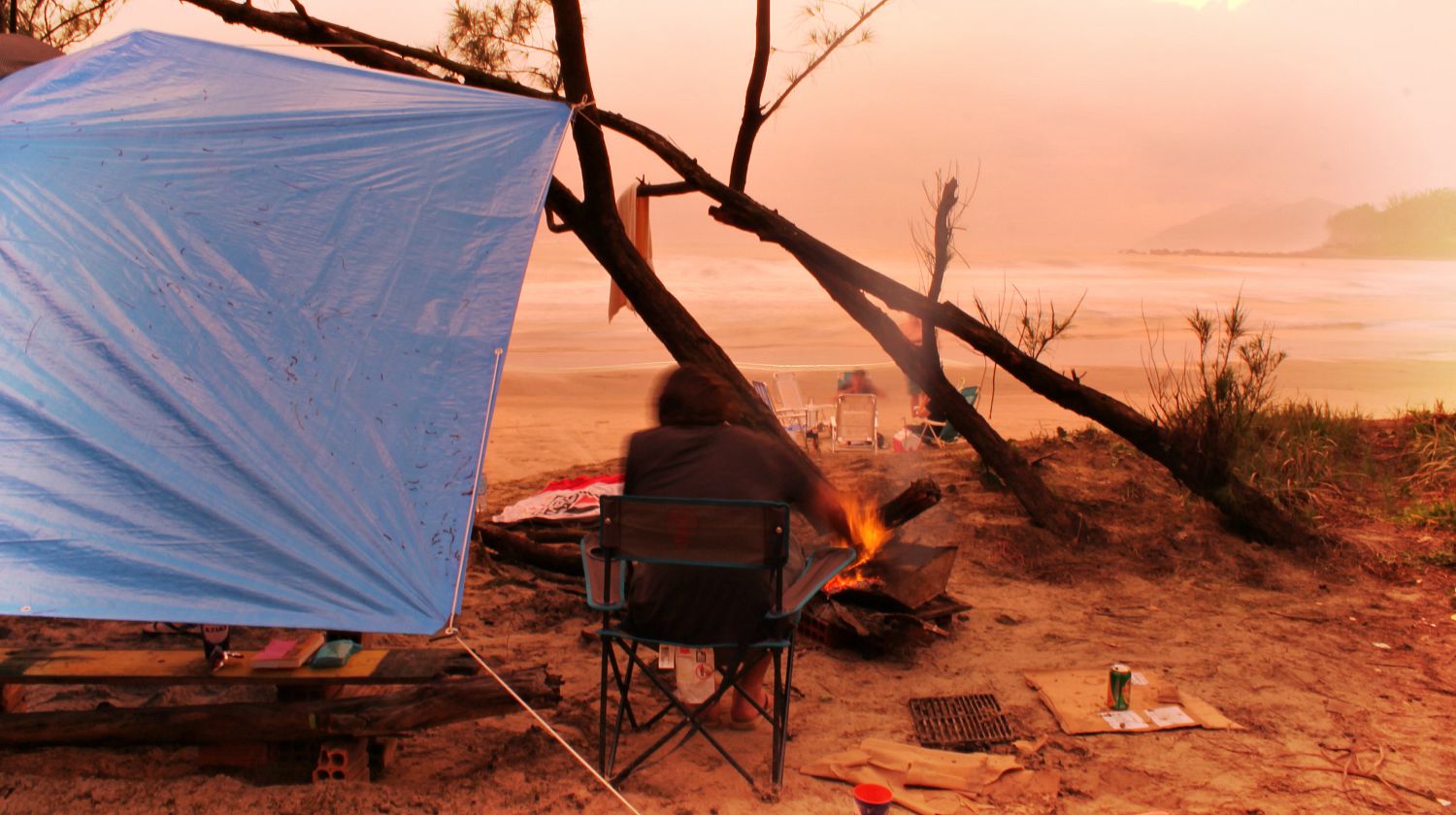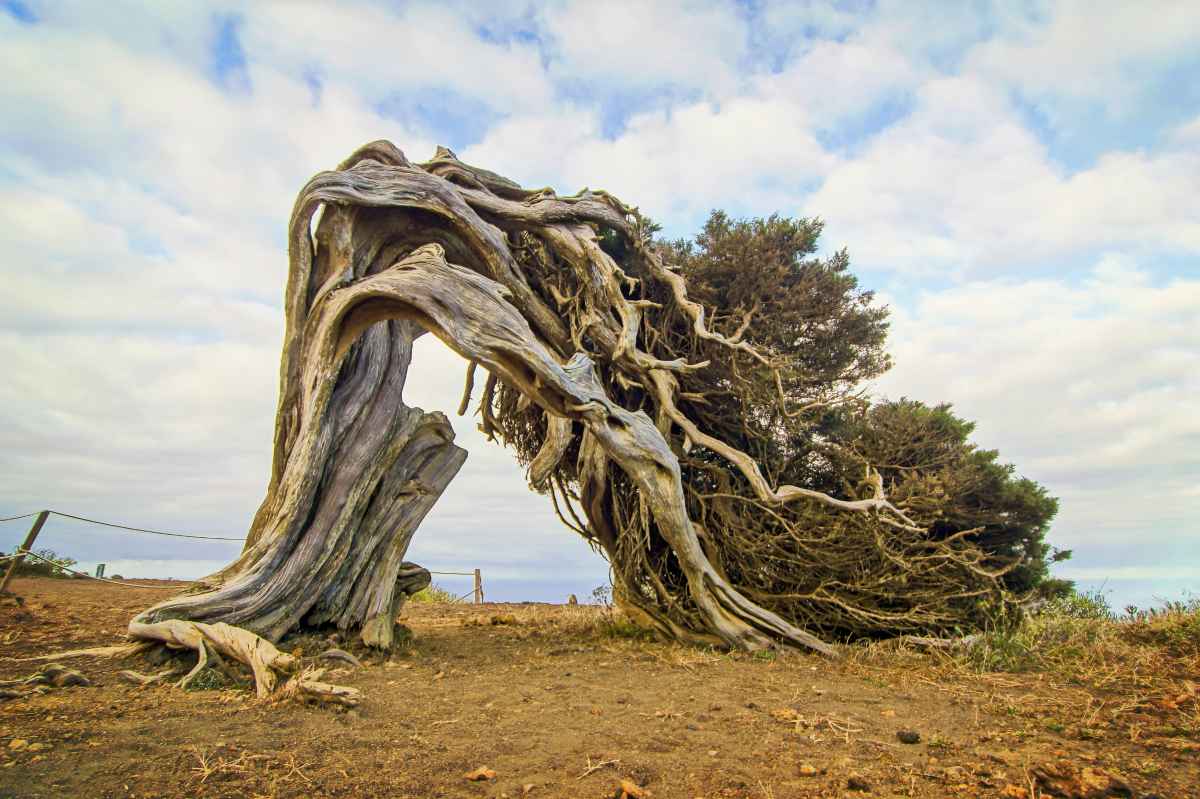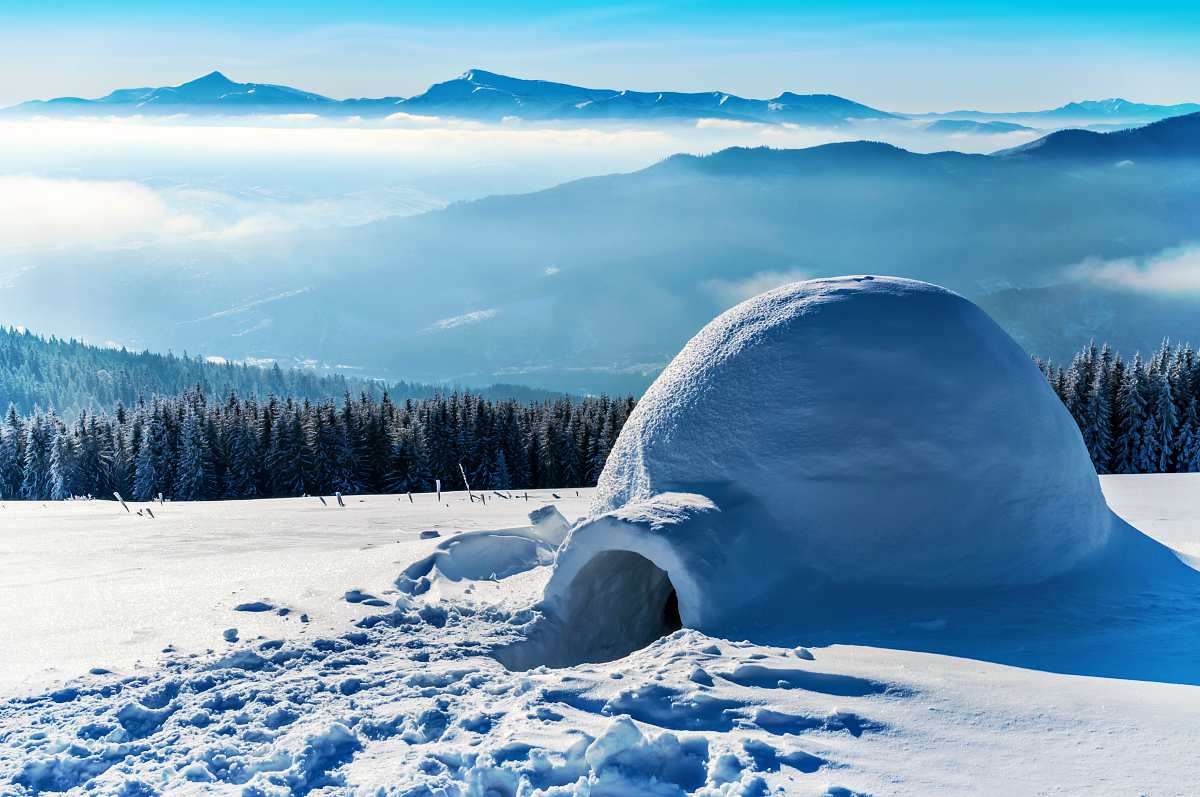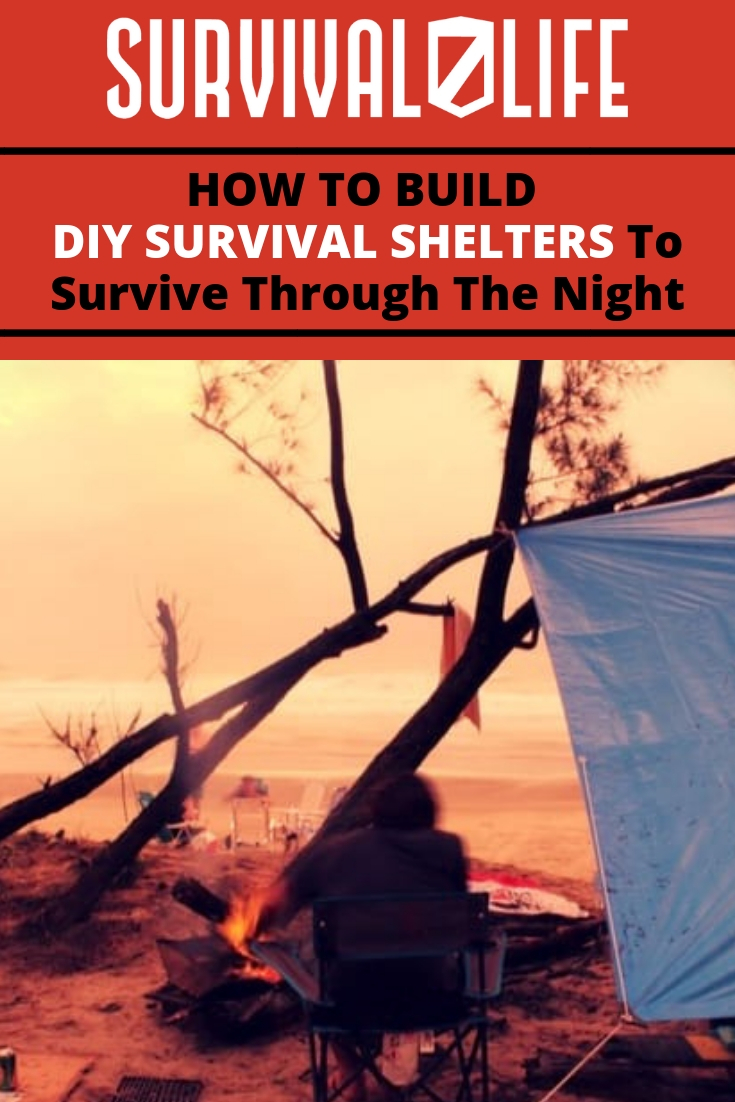Survival Skills
How To Build DIY Survival Shelters To Survive Through The Night

These 9 DIY survival shelters could just save your life when the sun is getting low and you're out of luck!
RELATED: How To Build A Shelter Using Natural Resources
DIY Survival Shelters to Suit Your Needs and
Shelter: A Pillar of Survival
Knowing how to create survival shelters for different environments is a valuable outdoor skill. If you find yourself in a situation where your knowledge about survival shelters matter the most, but you only have limited equipment to use, would you be able to do it?
If you're an outdoor person, this topic should be interesting as I'm about to show you the different survival shelters you can build in a particular environment with the available resources you can find. One of the important things to know is to pick a location free from any natural hazard if possible.
Anyhow, check out the different survival shelters below and how to build each one.
1. Tarp Shelter
[instagram url=https://www.instagram.com/p/Bg3bmb4Ahat/ hidecaption=true width=625]
If you have a tarp or a poncho with you, then you can set up a tarp shelter in just two minutes. These are the steps to make one:
First, anchor down the back side of the tarp facing the wind to ensure your tent won’t be blown away. Second, set up a stick on the other end which will act as an entrance, then tie the tip of the stick with a string or rope with the other end anchored down at a 45-degree angle.
This is also a fairly easy shelter to break down if you’re always on the move. Or you could just tie a rope in between two trees and place your tarp over it anchoring all sides on the ground.
2. Debris Shelter
[instagram url=https://www.instagram.com/p/BgP4zSjhlsg/ hidecaption=true width=625]
The word “debris” itself explains the material you need. Find a ridge pole and elevate one end with two sturdy forked branches or a small pole forming an elongated triangular form.
Place branches on either side of the pole down to the ground from end to end. When done, cover the ribs with debris to keep yourself insulated when inside.
Cover it again with more branches if you want to.
3. Spider Shelter
How to Build A Spider Shelter | A Survival Life Guide #lifehack https://t.co/Vtqd2K3mKh pic.twitter.com/RDww2S0Rn3
— Survival Life (@Survival___Life) June 13, 2017
This shelter is similar to a debris shelter but has an extra dome-like structure at the front. It gives you extra room for you to sit up, cook, or more space for your gear.
It is also the type of survival shelter for medium to long-term use because you can actually upgrade it depending on the situation.
This is a great wilderness survival shelter and place to store survival kits and other items since it's enclosed.
4. Wickiup Shelter
[instagram url=https://www.instagram.com/p/BakLrUxFTJT/ hidecaption=true width=625]
This is close to a teepee-kind of shelter if you look at it. You initially start with a tripod to build your base then continue on with more poles as you deem best.
The gaps will be filled with debris, such as leaves and small twigs, starting from the bottom working your way up. This is great in keeping you warm, and you can actually light a fire inside it if you want to.
What Is A Wickiup? It is a shelter in the form of a hut with an oval frame and consists of grass and brushwood.
5. Dugout Survival Shelter
This one requires tons of work but this is needed if you need a mid to long-term shelter. A sandy type of soil will be ideal for digging a ditch and this will be your basis for the area of your dug-out shelter.
Avoid dry wash basins. Dig about 2 to 3 feet down and line it up with grass for your mattress. Line the top with branches and place vegetation, which will serve as a roof.
Leave enough room for you to get in or out. If an underground shelter is a bit hard to accomplish, this may be your next best bet.
Also, this may be the best option if you're planning to create a bomb shelter. You can also store your survival gear here with the amount of space available.
6. Juniper Tree Shelter

This shelter requires very minimal work because of the way the tree is formed. Build the door of the shelter at the backside where the wind is blowing.
Pile long branches to form the framework “wickiup” style using the trunk of the juniper tree as your base. The rest of the tree and its leaves will act as cover for strong winds and moisture.
Cover it with vegetation and you can actually build a fire right in front of the doorway and you can keep yourself warmer. Since it's sturdy, this wilderness survival shelter also proves to be among the best storm shelters out there.
Click here for the step by step instructions for building a Juniper tree survival shelter.
7. Rainforest Treetop Hammock
Tentsile Hammock Tents Make a Treetop Adventure or Outdoor Oasis #cad https://t.co/bGVpWIPZMr pic.twitter.com/OdAX99Pnt4
— CADinfo Net (@CADinfoNet) August 8, 2016
Sleeping on the rainforest floor at night can be very dangerous as there will be nocturnal predators out for the hunt. Choose a spot high up in between the closest trees or with big branches and tie both ends of the hammock on each branch or tree.
Use a strong tarp, blanket, and even a tent to make a hammock. Tie your waist with a rope secured to a branch a bit higher of your hammock in case you roll off.
8. Bamboo House In The Wild
[instagram url=https://www.instagram.com/p/z8kK-CEPKo/ hidecaption=true width=625]
If you can cut down pieces of bamboo, then you can actually make any kind of shelter you want depending on its abundance. You will need ropes or from a paracord grenade or any paracord project for that matter, and tie each bamboo stick together.
You can also bury the basic foundation into the ground and work your way around it by laying more bamboo around and on top. If you have materials to spare, you can also add storage to contain your survival kit,
9. Igloo

You can build an igloo shelter in 30 minutes by using hard, compact, and dry snow. With the help of a saw or a long knife, you can cut the snow blocks into the right sizes and weight which will serve as the walls of the igloo.
In a blizzard, this can mean a matter of life and death. Here's a step-by-step guide on how to build an igloo or a snow shelter.
RELATED: How to Make a Survival Shelter From Debris and Leaves

No one wants to be in a sticky survival situation. That’s why we need to be extra ready for the worst-case scenario.
The best way to do this is to learn as many survival tips or skills as you can and practice them on a regular basis. You can even make it fun for you and your family.
Whatever the odds and wherever in the world you might be, if you’re prepared, you can build your own shelter.
Do you have any other ideas on how to make a survival shelter? Please add them in the comments below!
UP NEXT:
- 10 Critical Points You Need to Know About Building Any Natural Shelter!
- 3 Survival Shelters You Can Quickly Craft From Tree Branches
- DIY Super Shelter: Live Like a King in the Outdoors
Follow us on Facebook, Instagram, Twitter, Pinterest, and Tumblr!
***Disclaimer: The contents of this article are for informational purposes only. Please read our full disclaimer.***

Editor’s Note: This post was originally published on April 3, 2018, and has been updated for quality and relevancy.
-

 Paracord Projects11 months ago
Paracord Projects11 months agoParacord Projects | 36 Cool Paracord Ideas For Your Paracord Survival Projects
-

 Paracord Projects1 year ago
Paracord Projects1 year agoHow To Make Paracord Survival Bracelets | DIY Survival Prepping
-

 Medical Care1 year ago
Medical Care1 year ago21 Home Remedies For Toothache Pain Relief
-

 Knife Laws12 months ago
Knife Laws12 months agoAre Switchblades Legal? Knife Laws By State
-

 Do It Yourself1 year ago
Do It Yourself1 year agoSurvival DIY: How To Melt Aluminum Cans For Casting




A. "Wyatt" E
June 2, 2017 at 4:29 PM
I didn’t think it was wise to build a shelter too close to water. We have mountain lion, grizzly, elk, and other large game that might come down to drink. Just saying…….. Mountain Man
Dave D
April 9, 2018 at 3:42 PM
I always thought the same thing. Its best to avoid being too close to water or natural lines of drift.
Calvin
April 11, 2018 at 9:28 PM
Knowing how to create a simple shelter can also help improve your chances of survival if you are stranded in the wilderness with no way to get back to the main road within the day. Knowing how to find or create a shelter in a wilderness setting is yet another indispensable skill that any survivalist must possess. There are many survival training tips and methods to live in the wilderness but knowing how to build a shelter is one of the most important skills to have.
Pingback: How to Build A Wickiup | Survival Life | Survival Life
Pingback: How to Build A Spider Shelter | A Survival Life Guide
Pingback: The DIY Survival Shelters You Need To Know To Survive Anything – Survive The Outdoors
Pingback: The 3 Most Important Wilderness Survival Skills You Need
Pingback: 3 Survival Shelters Made Out Of Tree Branches
Pingback: How to Make a Hammock in The Rainforest
Pingback: Build An Igloo in 5 Easy Steps
Pingback: How To Build An Igloo in 5 Easy Steps
Pingback: How To Build An Igloo in 5 Easy Steps - Modern Survival Living
Pingback: How to Make a Hammock in The Rainforest - Modern Survival Living
Willowa
March 31, 2018 at 10:45 AM
When possible, I prefer poles propped up against a large rock, or low rock wall (not a rock wall that’s very high, falling rocks!). it gives solid protection against elements, man, or beast, on one side. Otherwise, not bad info, especially for people who haven’t done this kind of thing, and I suspect there are plenty.
M88
April 7, 2018 at 11:32 AM
My coder is trying to convince me to move to .net from PHP.
I have always disliked the idea because of the costs.
But he’s tryiong none the less. I’ve been using
Movable-type on various websites for about a year and am worried about switching to another platform.
I have heard great things about blogengine.net.
Is there a way I can import all my wordpress posts into it?
Any kind of help would be really appreciated!
Pingback: How To Make A Coffee Can Survival Kit List For Your Car
Pingback: How To Build DIY Survival Shelters To Survive Through The Night - Survive!
Danielle
April 19, 2018 at 4:34 PM
Nice respond in return of this issue with solid arguments and
telling everything conerning that.
Pingback: 80 Uses for Paracord - 3 Will Surprise You
Pingback: 80 Uses for Paracord That Will Surprise You - Survival Patch
Pingback: 80 Uses for Paracord That Will Surprise You - Survive!
Pingback: 83 Uses for Paracord That Will Surprise You
Pingback: 80 Uses for Paracord – 3 Will Surprise You | survivalisthandbook.com
Pingback: How To Create A Dug Out Survival Shelter - Survive!
Pingback: How To Create A Dug Out Survival Shelter - Survival Patch
Pingback: How To Create A Dug Out Survival Shelter | survivalisthandbook.com
Pingback: How to easily build a SURVIVAL SHELTER to protect you and your family
Pingback: 7 Cost-Effective Uses For Shipping Containers Survivalists Should Know - Survive!
Pingback: Bug Out Cabin Tips | How to Build the Ultimate Survival Shelter | survivalisthandbook.com
Pingback: Bug Out Cabin Tips | How To Build The Ultimate Survival Shelter - Survive!
Pingback: Building A Wickiup | Creating Shelter for Survival | Survival Life
Pingback: Do You Know These 25 Native American Survival Skills? - Survive!
Pingback: How to Build A Wickiup | Survival Life - Survive!
Pingback: Do You Know These 25 Native American Survival Skills?
Pingback: How To Fall | How to Survive Insanely High Falls | Survival Life
Pingback: How To Create A Dug Out Survival Shelter | Survival Life
Pingback: How To Build An Igloo In 5 Easy Steps | Primitive technology
Pingback: How To Build An Igloo In 5 Easy Steps - Survival Patch
Pingback: How To Build An Igloo In 5 Easy Steps
Pingback: Coffee Can Survival Kit: Don’t Travel Without It – Ultimate Survival Alerts
Pingback: Coffee Can Survival Kit: Don’t Travel Without It
Pingback: How To Make A Hammock In The Rainforest And Elsewhere – Ultimate Survival Alerts
Pingback: How To Make A Hammock In The Rainforest And Elsewhere - Survival Patch
Pingback: How To Make A Hammock In The Rainforest And Elsewhere
Pingback: Lost In The Woods 101: What To Do When Lost In The Woods [Video]
Pingback: 82 Uses for Paracord That Will Surprise You | Primitive technology
Pingback: 82 Uses for Paracord That Will Surprise You – Ultimate Survival Alerts
Pingback: Emergency Shelters and Medical Treatment - Cooking in Quarantine
Pingback: Emergency Shelters and Medical Treatment – The Self-Sufficient Life
Pingback: Emergency Shelters and Medical Treatment – surviveurself
xevietnam.net
April 9, 2021 at 9:15 PM
I am also intending to switch. Type can move across different sites for about a year and am worried about switching to another platform.
I’ve heard great things about blogengine.net.
Is there any way I can import all my WordPress posts into it?
Nice to help you
Pingback: 3 Wilderness Survival Skills Everyone Needs To Know
Pingback: Easy to Assemble Emergency Shelters – SurvivalHood
Pingback: 7 Keys to a “Bomb Proof” Survival Shelter [PODCAST] – The Self-Sufficient Life
Pingback: 7 Keys to a “Bomb Proof” Survival Shelter [PODCAST] - Cooking in Quarantine
Pingback: 7 Keys to a “Bomb Proof” Survival Shelter [PODCAST] – Alive After USA Fall
Pingback: 7 Keys to a “Bomb Proof” Survival Shelter [PODCAST] – surviveurself
Pingback: 7 Keys to a “Bomb Proof” Survival Shelter [PODCAST] | Best Go Bag
Pingback: 7 Keys to a “Bomb Proof” Survival Shelter [PODCAST] – SurvivalHood
Pingback: 7 Bushcraft Skills You Must Have To Survive In The Wild
Pingback: Emergency Shelters and Medical Treatment – Bulletproof Survivors
Pingback: Emergency Shelters and Medical Treatment – Sprent Brass
Pingback: Emergency Shelters and Medical Treatment - Survival Kit
Pingback: Emergency Shelters and Medical Treatment – SurvivalCove.com
Pingback: TIPSDo You Know These 25 Native American Survival Skills? – tinnhanh247
Pingback: Do You Know These 25 Native American Survival Skills? | Spent Brass
Pingback: Tarp Shelter | "Quick Up" Survival Shelters You Can Build - Firearm Pebbles